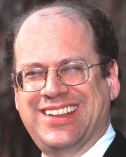
William H. Schlesinger
Cary Institute of Ecosystem Studies
|
Primary Section: 63, Environmental Sciences and Ecology Secondary Section: 64, Human Environmental Sciences Membership Type:
Member
(elected 2003)
|
Biosketch
William Schlesinger has defined the forefront of the new interdisciplinary science of biogeochemistry—the chemistry of the surface of the Earth. Increasingly, we recognize that the chemical conditions we regard as normal are determined by biota. And, increasingly, we see that a single species, Homo sapiens, has a dramatic impact on the Earth’s chemistry, yielding environmental problems ranging from climate change and nitrogen pollution to acid rain. Schlesinger is best known for his career of studies on soil organic matter, and changes in that carbon pool that contribute to the rise of carbon dioxide in Earth’s atmosphere. He was the first to quantify the pool of organic carbon in soils (1977), which is now the focus of so much attention due to warming of organic soils at high latitudes. The original paper was followed by calculations of the loss of organic carbon in rivers (globally) (with Melack 1981), the amount of carbon contained in soil carbonates (1982) and their rate of formation (1985), the loss of organic matter from agricultural soils (1986), the rate of accumulation of organic carbon in soils globally (1990), and the increments of soil organic to be expected as a result of forest growth at high CO2 (with Lichter 2001 and 2008). He has examined changes in soil processes and soil carbon storage that accompany plant growth at elevated levels of atmospheric carbon dioxide, as simulated in the Duke Forest Free-Air CO2 Enrichment (FACE) experiment, for which he was the principal investigator. His work has also focused focused on deserts, where the changes in soil organic matter with desertification are so easy to ascertain against the background parent materials. Recently, he has offered a cautious evaluation of the potential for agricultural soils to sequester carbon dioxide from the atmosphere.
Research Interests
His work has also extended into other global cycles (NH3 1992), the fate of nitrogen on land (2009), nitrous oxide uptake by soils (2013), boron (2001 and 2013), vanadium (2017), fluorine (2018) and recently lithium (2021, in prep.). In each case, he has shown the dramatic human impact on the movement of these elements at the surface of the Earth, sometimes purposeful and often inadvertent. The four editions of his textbook (1991 to 2020, with more than 30,000 in print) have guided countless students worldwide into the study of biogeochemistry.

